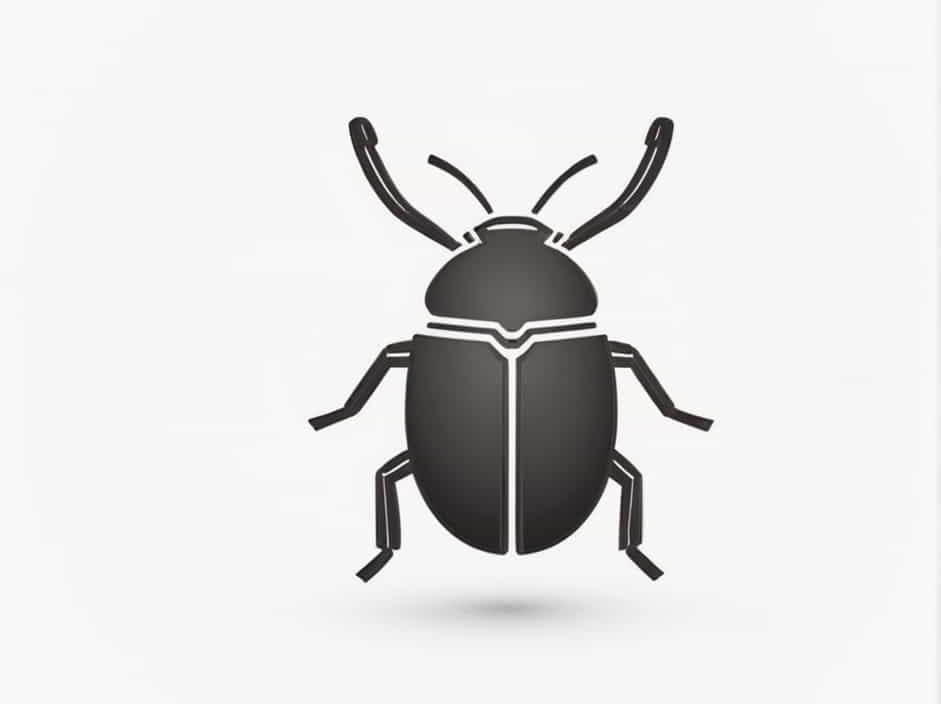Have you ever spotted an oval-shaped bug with long antennae crawling on plants, walls, or even inside your home? These insects come in various species, including beetles, stink bugs, weevils, and true bugs. Some are harmless, while others can be agricultural pests or household nuisances.
Understanding their physical characteristics, habitat, and behavior is essential for proper identification. This guide explores the most common oval bugs with long antennae, how to distinguish them, and what to do if they invade your space.
Common Oval Shaped Bugs with Long Antennae
Several insects fit the description of an oval-shaped bug with long antennae. Here are the most common species:
1. Brown Marmorated Stink Bug (Halyomorpha halys)
Appearance:
- Oval body with a shield-like shape.
- Brownish, mottled pattern on the back.
- Long, banded antennae extending beyond the head.
Habitat and Behavior:
- Often found on fruit trees, crops, and gardens.
- Can enter homes in fall and winter seeking warmth.
- Releases a strong odor when disturbed.
Impact:
- Considered an invasive agricultural pest.
- Damages fruits, vegetables, and soybean crops.
- Not harmful to humans but can be a household nuisance.
2. Boxelder Bug (Boisea trivittata)
Appearance:
- Oval, black or dark brown body with reddish-orange markings.
- Long, thin antennae extending beyond their head.
Habitat and Behavior:
- Lives near boxelder, maple, and ash trees.
- Enters homes during cold months for shelter.
Impact:
- Does not damage plants but can invade homes in large numbers.
- Can stain walls and curtains with their excretions.
3. Click Beetle (Elateridae Family)
Appearance:
- Hard, oval-shaped body, usually brown or tan.
- Very long antennae, often segmented.
- Can make a ‘click’ sound to flip itself over when disturbed.
Habitat and Behavior:
- Found in gardens, forests, and fields.
- Larvae (wireworms) can harm roots of crops and grasses.
Impact:
- Adults are harmless, but larvae can be destructive to plants.
4. Weevils (Curculionidae Family)
Appearance:
- Small, oval brown or reddish-brown body.
- Long, curved snout with extended antennae.
Habitat and Behavior:
- Found in stored grains, nuts, and dry foods.
- Some species feed on plant roots and leaves.
Impact:
- Can be a serious pest in stored food and agriculture.
- Infested food should be discarded.
5. Assassin Bug (Reduviidae Family)
Appearance:
- Slender oval or elongated body, brown or dark-colored.
- Very long, curved antennae.
- Has a piercing-sucking mouthpart used for predation.
Habitat and Behavior:
- Found in gardens, forests, and homes.
- Feeds on other insects, making them beneficial predators.
Impact:
- Not a pest, but may bite humans if threatened, causing pain and swelling.
Why Do These Bugs Have Long Antennae?
The long antennae on these insects serve several important functions:
- Navigation – Helps them sense their surroundings.
- Communication – Used to detect pheromones and signals from other insects.
- Food Detection – Helps locate plants, decaying matter, or prey.
The length and sensitivity of an insect’s antennae often indicate its dependence on chemical signals in its environment.
How to Identify an Oval Shaped Bug with Long Antennae
If you find a bug matching this description, here’s how to identify it:
- Observe the Shape and Size
- Is it perfectly oval or slightly elongated?
- Is it small (5-10 mm) or larger (12-20 mm)?
- Check the Antennae
- Are they long and segmented?
- Do they have bands or color variations?
- Look for Distinct Features
- Does it have a hard or soft shell?
- Does it emit a bad odor when disturbed?
- Consider Where You Found It
- Is it near plants, indoors, or in stored food?
Are These Bugs Dangerous?
Most oval-shaped bugs with long antennae are harmless to humans, but some species can cause problems:
- Agricultural Pests – Stink bugs, weevils, and wireworms damage crops.
- Household Nuisances – Boxelder bugs and pantry weevils invade homes.
- Biting Insects – Assassin bugs can bite, though they are beneficial predators.
How to Get Rid of Unwanted Oval Shaped Bugs with Long Antennae
If these insects become a problem, try these methods:
1. Prevent Entry into Homes
- Seal cracks and crevices around windows and doors.
- Use fine mesh screens on vents and openings.
2. Remove Attractants
- Keep grains and dry food sealed in airtight containers.
- Clean up fallen fruit and plant debris.
3. Use Natural Repellents
- Diatomaceous earth can deter insects without chemicals.
- Essential oils like peppermint, neem, or citronella can help repel bugs.
4. Physical Removal
- Use a vacuum cleaner for indoor infestations.
- Handpick larger bugs from plants and dispose of them.
5. Chemical Control (If Necessary)
- Apply food-safe insecticides for pantry pests.
- Use insecticidal soap or sprays for outdoor infestations.
An oval-shaped bug with long antennae can belong to various species, including stink bugs, boxelder bugs, weevils, click beetles, and assassin bugs. While most are harmless, some can damage crops, invade homes, or bite if provoked.
Understanding their appearance, behavior, and habitat helps in proper identification and control. If these insects become pests, prevention and natural remedies are the best solutions before resorting to chemicals.
